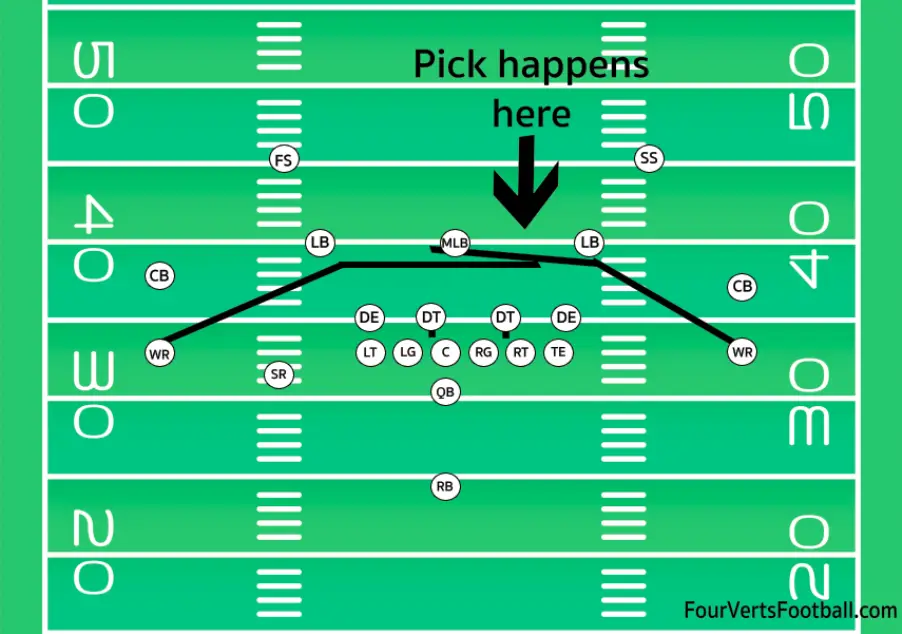A pick play in football occurs when an offensive player intentionally impedes a defender from covering his assigned receiver.
These plays are typically done by two receivers. One receiver sets the pick in order to create separation between the other receiver and his defender. The second receiver simply runs his route and finds himself open.
Are Pick Plays Legal?
Pick plays are technically illegal in the NFL though it is often a judgment call by the official.
The intention of the pick play is to use one receiver’s route to allow another receiver to get free. Depending on how you get the defender off the intended receiver is what will determine if the pick is called or not.
Imagine your receivers are running slants from either side of the field. As you cross the field the cornerbacks are forced to run around the opposing receivers causing one receiver to break free from his cornerback.
This is a pick play as it was the intention of the play design to make these crossing routes difficult on the corner.
But since the receivers made no contact with the corners themselves this will not be called.
Now say you ran these slant routes and one of the receivers made physical contact with a corner to allow the other receiver to get open. In this situation, it would almost certainly be called and the play would not count.
This is why judging a pick play as illegal or legal is very difficult. If executed perfectly by an offense you should find that one receiver will get wide open.
All without the other receiver having to make physical contact with a corner. It is the plays in which the “picked” corner is hit physically that will almost always earn a penalty against the offense.
The official NFL rulebook has this to say about pick plays:
(e) cutting off the path of an opponent by making contact with him, without playing the ball.
Are you allowed To Set Picks In Football
Much like pick plays, setting picks in football is not black or white in terms of legality. You technically are allowed to set picks in football but you need to be sure you do not initiate contact.
Similar to basketball if you set a pick keep your feet planted and do not initiate contact your pick will be legal.
This is not true in all scenarios as a football player. But if you are a receiver setting a pick be sure to not move or initiate contact and your pick will typically be called legal.
What Routes Are Used In Pick Plays?
Crossing Routes

Crossing routes are one of the most commonly used routes in pick plays due to their nature of running laterally across the field.
If two receivers running in opposite directions run crossing routes they are often able to get in the way of each other’s defenders.
If these routes are run at the same depth then the two receivers and their two defenders should meet at some point in the middle of the field.
At this point, the defenders will have to sort through the crowd and ensure that they stay with their man. Forcing the receiver to work their way around the crowd should allow one of the receivers to achieve seperation.
Slant/Out Route
Pick plays are often run from two routes on the same side of the formation. One of these route combinations is a slant and out route.
The outside receiver will run a slant cutting towards the middle of the field. While the slot receiver will run a shallow out route.
These players will attempt to make their cuts so that one cut is slightly shallower than the other. This should give enough room for the receiver to get by but should make it difficult for the defender to stick with them.

